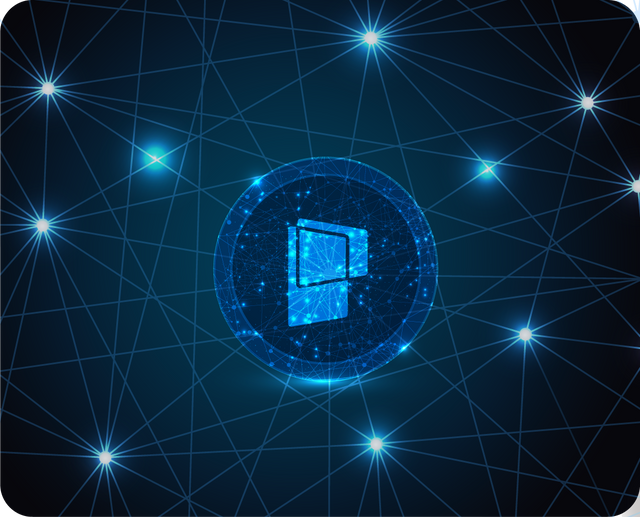What is Token Model? – Part 2
Did you enjoy reading last week's What is Token Model – Part 1? Last time, we looked into the difference between tokens and coins and the standard token, ERC-20. If you missed the last article, please read it first and move on! Today, we are going to talk about what needs to be solved on the ERC-20 token and the token economy.
As I mentioned in my previous article, ERC-20 has various advantages. However, there are still parts that need improvement.
First, Ethereum Network, the mainnet of ERC-20 today, is attempting to change from Proof-of-Work (PoW) to Proof-of-Stake (PoS) to address the scalability challenges it continues to experience. Scalability troubleshooting is a flexible response to the ever-increasing number of users' transactions, and the Ethereum project continues to change and is expected to take a long time for it to build a stable network. In this process, if the user's needs grow beyond their capacity, the network's behavior may become unstable, which may lead to instability of the network.
Secondly, it is an expensive gas fee. Gas fees are charged differently depending on blockchain activities, and gas fees increase when blockchain traffic is high. Therefore, in the long run, highly volatile commission systems act as a major inhibitor to service continuity.
Third, like Bitcoin, which uses Proof-of-Work methods, the Ethereum platform has a significantly lower maximum processing speed compared to PolkaDot, Cosmos, and EOS in the Proof-of-Stake method. Slow throughput is a constraint on transactions and withdrawals, and if the network is stagnant, it also affects the transfer rate of all tokens based on ERC-20.
Finally, the entry barriers are too low. The process of generating ERC-20-based tokens on Ethereum is easy and there are no significant constraints, allowing people to create their own tokens without purpose or goal. As a result, worthless projects can be created and abused for fake ICOs.
Mitum, the mainnet of Protocon Network, adopts PBFT consensus algorithmic approaches to provide reliable and fast TPS for increased stability and transaction throughput.
In addition, as an alternative to the platform's high fees and liquidity supply, it allows you to pay fees with only dApp tokens without obtaining mainnet tokens through FeeFi DEX. The introduction of a fixed fee price system allows you to pay fees fixed in the fiat currency to control the volatility of fees. (This will be explained in more detail in future posts.)
In the token issuance model of the Protocon Network, all new tokens can be issued after receiving approval from nodes as a device to protect from previously mentioned abuse cases and meaningless tokens.
Through Episodes 1 and 2, we have gained enough knowledge about the concept of tokens. Now let's dig into the background of the token economy and how it works in terms of behavioral psychology.

How did the Token economy first appear? Token economy started with the idea that wealth, a human instinctive need, should be shared without being overly biased.
Beginning in the 21st century, the polarization of wealth caused by capitalism was maximized. Before the advent of cryptocurrency, it was taken for granted that money was issued and managed by the central bank. However, as the 2008 bubble economy brought about a financial crisis, the U.S. government chose to indiscriminately print dollars, which led to a massive backlash from citizens. As a result, moral hazard reached its peak, with major figures who caused the financial crisis receiving bonuses, even though huge taxes were spent to overcome the financial crisis.
The Cypherpunk emerged as a counterpart to wealth polarization, which claimed decentralization and led the spread of encrypted technology. Meanwhile, Bitcoin, the first cryptocurrency, emerged in October 2008 when a pseudonym "Satoshi Nakamoto" published a white paper on Bitcoin. Decentralization technology without third-party intervention has shocked the world by opening a new economic system, the Token economy.
Then what does the Token economy mean?
According to the Hackernoon definition, Token economy refers to the system of incentives based on cryptocurrencies that reinforce and build desirable behaviors in the blockchain ecosystem.
Token economy is based on behavioral psychology, especially game theory and incentive systems where tokens are rewarded for performing certain behaviors and exchanged for tangible/intangible values which is so-called 'Barter economy'. Tokens distributed according to their participation can be exchanged for other tokens or tangible/intangible values, as shown in the figure below.
.png)
Currently, corporations allocate profits to shareholders who are the owners of the company as a priority, and not all stakeholders receive appropriately distributed compensation. That's why the Token economy has been getting attention recently. Unlike the corporate system, which focuses only on founders and investors, all participants who contribute to the ecosystem share profits and can be rewarded as much as they contribute to the blockchain ecosystem.
Blockchain networks do not have a central control tower that can force people to participate or act, so it is important to motivate network members to engage well. Therefore, token economy is paramount in the value of tokens and ecosystem creation, and for an active ecosystem, the right design and well-organized governance structure of token economy must be provided.
In future posts, we will explain the token economy and governance structure of the Protocon Network in detail, so please look forward to it. Thank you.
Official Protocon Links
Twitter
Facebook
Medium
Reddit
Github